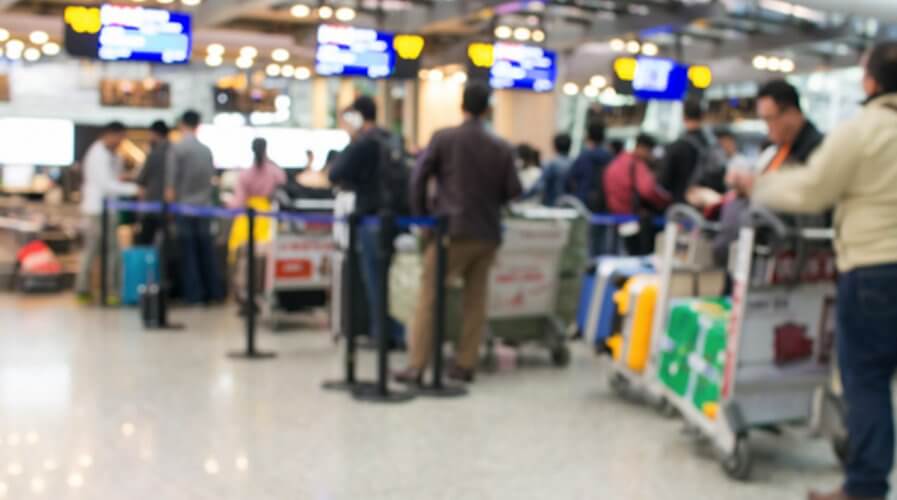
Queues at airports and public gatherings may well be less tiresome with the introduction of AI baggage scans. Source: Shutterstock
Putting the AI in airport: Intelligent scanner trials in Japan
HITACHI has announced new technology that uses artificial intelligence (AI) to improve baggage X-ray scanning.
Habitual travelers will be well aware of the delays caused by the increasingly high levels of security in place at airports and other travel hubs. Additionally, most large-scale public gatherings these days are subject to security checks due to the worldwide rise in the number of terrorist incidents in public places.
The sight, therefore, of security staff pouring over screens of images from X-ray baggage scanners is one that’s very common. But we may start to see fewer human staff thus employed in the near future.
The technology developed by Hitachi can automatically determine the safety of articles in bags using data about their density and material make-up.
Airport security rules for ALL US-bound flights are changing this week. Prepare for delays! https://t.co/GWjV9Ol5FY
— Leon Perlman PhD (@leonperlman) October 26, 2017
Even when apparently safe articles are detected in baggage by current X-ray machines, a manual visual inspection is often suggested by the system if the materials are different from usual, or if the shape of an object is deemed suspect.
Further complications are added when multiple suspect items are imaged together – this throws pattern recognition code off the scent.
By reducing the so-called false positives, a great deal of time can be saved in security queues by the AI without compromising safety levels, it is hoped. In Hitachi’s trials, the company claims, about a 40 percent time saving was achieved by personnel not having to search bags that otherwise would have required inspection.
New US airport security measures raise concerns of flgth delays https://t.co/sRSjcGRBUn pic.twitter.com/9E2gUfyaBY
— Airlines & Airports (@airlineairport) October 25, 2017
AI-based detection is not, however, employed on its own. Rather, the AI results are combined with traditional pattern-recognition technology. And like every example of machine learning, the AI system educates itself with any corrections it receives from either human operators or the traditional algorithms.
One of the aspects of so-called artificial intelligence (the use of the term machine-learning would be more accurate in this instance) is that it excels in specific, deliberately limited scenarios. Pattern recognition is one of these areas in which outcomes are either right or wrong – perfect to apply teaching principles which aid the ‘intelligence’.
While still at the testing stage, Hitachi hopes to bring production models to market in the Japanese 2018 financial year, which begins April 2018.
READ MORE
- Safer Automation: How Sophic and Firmus Succeeded in Malaysia with MDEC’s Support
- Privilege granted, not gained: Intelligent authorization for enhanced infrastructure productivity
- Low-Code produces the Proof-of-Possibilities
- New Wearables Enable Staff to Work Faster and Safer
- Experts weigh in on Oracle’s departure from adland




